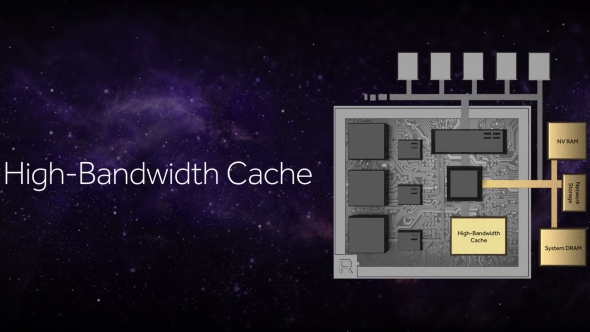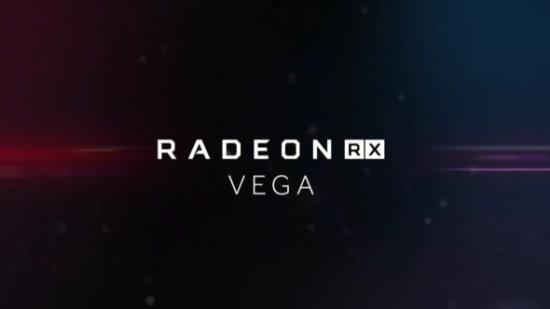AMD have released a few more tantalising morsels about the upcoming RX Vega graphics cards set to ship in a couple of months. As well as proclaiming them “just around the corner, I promise!” AMD’s Scott Herkelman also announced they would be appearing in 4GB and 8GB memory capacities too.
Check out our in-depth look at the new Vega GPU architecture.
The RX Vega graphics cards are going to arrive in both 4GB and 8GB form when they get released by AMD’s GPU partners, like Sapphire, Asus and XFX.
“Vega will use a memory architecture with HBM2 that has a different capacity stack, so you’ll see from our partners different configurations,” explained Herkelman, “whether that’s 4GB or 8GB or those types of memory architectures that will allow you to drive different games and different resolutions based upon what capacity stack they end up using.”
This would probably go some way to explaining the multiple device IDs for Vega that have appeared in the latest Linux driver patches from AMD. With the memory right on the chip itself the different capacity chips will have to be discrete GPUs with either 4GB or 8GB stacked on board.
You might be wondering about a new high-end graphics card appearing with just 4GB of memory but AMD are pinning their hopes on the high bandwidth cache controller (HBCC) to alleviate any issues with a lack of memory for today’s high fidelity, open-world games. By allowing the Vega GPU architecture to “go off chip” the 4GB version shouldn’t be limited by any perceived paucity of memory.

In a demo of Deus Ex: Mankind Divided – a seriously GPU-intensive game at max settings – with HBCC turned on the RX Vega GPU was nailing 50% higher average frame rates as well as 100% higher minimums to visibly improve the fluidity of the gaming experience.
What wasn’t made clear in the demonstration, and something we’ll need clarification on when AMD goes deeper into the tech closer to launch, is whether the HBCC will be a passive technology or whether game developers are going to have to code specifically for AMD’s new memory structure. If properly utilising Vega’s HBCC is going to require some serious development time the 4GB Vega cards may still run out of memory on older games as well as cross platform titles where the PC version maybe doesn’t get as much development love.
Herkelman also mentioned the likelihood of the RX Vega chip appearing in notebook form too. With a 50% reduction in mobile graphics card footprint, comparing GDDR5 with HBM2 variants, Vega ought to be a great choice for gaming laptops.
“[Vega] will allow our partners to create brand new, fantastic design notebooks,” said Herkelman, “that are thinner, that are lighter, but still pack the punch you need to drive virtual reality or the latest and greatest triple-A games.”
AMD’s RX Vega is looking like it could be one seriously impressive bit of graphics silicon when it does arrive this year. We’re expecting a May release for RX Vega, with the Polaris refresh RX 500 series arriving in April. AMD have also been co-marketing the RX Vega alongside Bethesda’s Prey, which itself has a May 5 release date, could it really be that soon? That would definitely be “around the corner.”
Via Videocardz.
